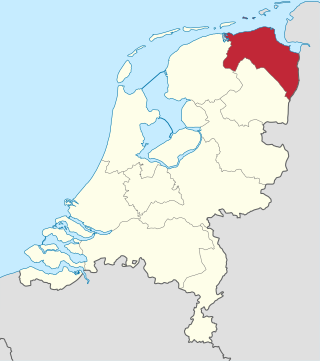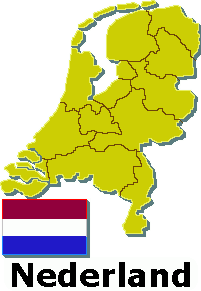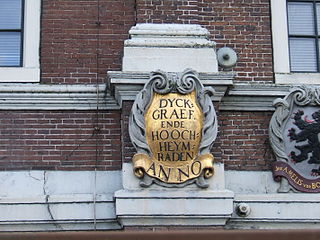
Groningen is the northeasternmost province of the Netherlands. It borders on Friesland to the west, Drenthe to the south, the German state of Lower Saxony to the east, and the Wadden Sea to the north. As of January 2023, Groningen had a population of about 596,000, and a total area of 2,955 km2 (1,141 sq mi).

Drenthe is a province of the Netherlands located in the northeastern part of the country. It is bordered by Overijssel to the south, Friesland to the west, Groningen to the north, and the German state of Lower Saxony to the east. As of January 2023, Drenthe had a population of about 502,000, and a total area of 2,680 km2 (1,030 sq mi).

Overijssel is a province of the Netherlands located in the eastern part of the country. The province's name comes from the perspective of the Episcopal principality of Utrecht, which held the territory until 1528. The capital city of Overijssel is Zwolle and the largest city is Enschede. The province had a population of about 1,184,000 as of January 2023. The land mostly consists of grasslands and some forests ; it also borders a small part of the IJsselmeer to the west.

There are twelve provinces of the Netherlands representing the administrative layer between the national government and the local governments, with responsibility for matters of subnational or regional importance.
The Estates, also known as the States, was the assembly of the representatives of the estates of the realm, the divisions of society in feudal times, called together for purposes of deliberation, legislation or taxation. A meeting of the estates that covered an entire kingdom was called an estates general.

This list contains all twelve official flags of the provinces of the Netherlands, including the pennons.
This is an armorial of the Kingdom of the Netherlands.

The Young Democrats is a social-liberal youth organisation in the Netherlands, founded in 1984. Although independent, it is affiliated with the social-liberal Democrats 66 party. With over 5,000 members, it is the largest political youth organisation of the Netherlands.

Rijkswaterstaat, founded in 1798 as the Bureau voor den Waterstaat and formerly translated to Directorate General for Public Works and Water Management, is a Directorate-General of the Ministry of Infrastructure and Water Management of the Netherlands. Its role is the practical execution of the public works and water management, including the construction and maintenance of waterways and roads, and flood protection and prevention. The agency was also involved in the construction of big railway projects such as the Betuweroute and the HSL-Zuid.

In the Netherlands, a water board, water council or water authority is a regional governing body solely charged with the management of surface water in the environment. Water boards are independent of administrative governing bodies like provinces and municipalities. In general, they are responsible for managing rivers and canals, issues with the flow of watercourses and drainage issues, water collection, flood and erosion prevention and provision of potable water. They manage polder systems, water levels, water barriers and locks, enforcements, water quality and sewage treatment in their respective regions. The concept of a coordinating "High Water Authority" (Hoogheemraadschap) originated in what now is the province of South Holland in the 12th century.
Dutch dialects and varieties are primarily the dialects and varieties that are both cognate with the Dutch language and spoken in the same language area as the Standard Dutch. They are remarkably diverse and are found within Europe mainly in the Netherlands and northern Belgium.
De Hoop is a name used for mills in Belgium and the Netherlands.
The Dutch Amateur Radio Emergency Service (DARES), which was founded on 12 May 2004, is a non-profit organization made out of licensed radio amateurs in the Netherlands. DARES participants are able to set up a national, continental or international radio network in case of an emergency situation, like a power outage on a large scale, a flooding, a cyber attack causing severe damage to communication networks, or other emergency situations, where the safety of a large group of people are in danger.

Netherlands–Spain relations are the bilateral relations between the Netherlands and Spain. The relations between both countries are defined mainly by their membership in the European Union and by being allies in the NATO.

Water board elections were held in the European Netherlands on 15 March 2023 to elect 518 of the 602 resident members of the country's water boards.























